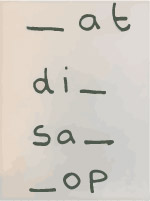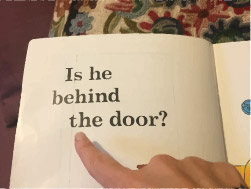How to Support Your Child Alongside Phonics Hero
Phonics Hero teaches six skills: Knowing the Sounds, Reading, Spelling, Tricky/Camera Word Reading and Spelling and Sentence Reading. Our reporting will score your child with a red, orange or green percentage for each skill (e.g. Knowing the Sounds or Reading) and each sub-skill within it (e.g. ‘s’ vs ‘a’).

Here’s what you can do to support your child at every step, with each colour band:
 Skill 1 – Knowing the Sounds:
Skill 1 – Knowing the Sounds:
If your child has ‘red scores’ in Phonics Hero, do not move onto reading yet. Practise until the sounds are easy and automatic. Our Educational Psychologist, Michael Wood, explains what we are looking for:
How you can help with the Sounds:
Red and orange scores:
It’s important not to move on; knowledge of these sounds is not yet embedded. Take a look at steps 1-4 from our blog, How to Teach a Child to Read. It covers the pre-reading steps you can do at home. It’s really important you get these foundations well-embedded before making the leap to blending to read.
Green scores:
You can reinforce your child’s learning with a simple set of lowercase magnetic letters:
- Place them on your refrigerator. Ask your child to refer to them daily; practising little and often will make the best impact. Keep it light and fun.
- Take it in turns to ask each other to find the sound. When your child is the ‘teacher’, get it wrong to keep them on their toes!
- Play ‘Missing Sound’ – take a set of letters and remove one. Your child must identify which letter is missing.
- Put them in the bath! Ask your child to ‘go fishing’ for a sound. Line them up on the side of the bath and have your child toss them into the bath as they say each sound.
- Let the letters act as a ‘password’ to the goodies in the cupboard. They must touch and say each sound to open the fridge!
 Skill 2 – Reading:
Skill 2 – Reading:
Michael Wood explains what is involved in making the leap from knowing the sounds to blending them together to read a word:
How you can help with Reading:
Red and orange scores:
Beginning Reading
This is oral blending, the ability to glue sounds together to produce a word – without a letter present. Take a look as this girl demonstrates:
We recommend you repeat this activity a few minutes a day; as you make breakfast – pass the ‘c-u-p’ and the ‘b-ow-l’ and so on. If a child can’t orally blend, moving onto blending with the addition of letters will be futile.
Blending
The key to success with Blending is practice – lots of it! For those parents who want to a help a child struggling with blending, take a read of How to Help the Blending Penny Drop.
Nonsense Word Reading
Nonsense Words are made-up words, like ‘fip’ or ‘bep’; they check a child can accurately decode. If your child has red and orange scores in Nonsense Word Reading, you should make sure they are blending accurately. It’s not necessary to teach nonsense words in isolation but you might like to download the Nonsense Word List to have a go on paper.
Fast Reading
Fast Reading is blending words to read – quickly. As your child begins to shows signs that blending is becoming effortless, start encouraging them to “read it in their head”.
Green scores:
As a parent of an emergent reader, the best support you can give your child is lots of practice at blending. Find opportune moments throughout the day to:
 Skill 3 – Spelling:
Skill 3 – Spelling:
The beauty of synthetic phonics is that we teach reading and spelling hand-in-hand. This means if you can read something, you can also spell it! Our Educational Psychologist, Michael Wood, explains what is involved in spelling new words.
How you can help with Spelling:
Red and orange scores:
Beginning Spelling
- Firstly, use magnetic letters. It’s a lot harder to spell words when you have to worry about forming the letters too!
- Start off spelling words with only a few letters to ease the child into spelling whole words.
- Spelling is a much harder process than reading, so expect it to develop slower. If beginning spelling is hard, support your child by only expecting them to spell part of a word.
- Rather than write words, have a child spell the words with movement, such as jumping between the sounds to spell a word. Or write letters on small toys (e.g. cars or rubber ducks) and have your child line them up to spell the word.
- Play ‘Teachers’: your child reads the word (giving extra reading practise) and you spell the words. Make a mistake for your child to correct, then swap roles.
- Practise with our Worksheet Packs.
Fast Spelling
Similarly to Fast Reading, Fast Spelling aims to get children to spell words quickly. You can time how long it takes to spell a list of words and try to beat your time. Challenge your child to see if he/she can improve on that time!
Green scores:
Just like reading, practising spelling at home is best done with the ‘little and often’ approach. You might like to:
- Orally spell words without letter names or writing involved: “James, how do you spell car?” “c-ar”.
- Have your child write your shopping list, thank you notes and signs (No Grown Ups!).
- Make their spelling multi-sensory; you might write in flour, chalk, paint and so on.
- Use our spelling worksheets.
 Skills 4 & 5 – Read & Spell Tricky/Camera Words:
Skills 4 & 5 – Read & Spell Tricky/Camera Words:
Unfortunately, not all words can be easily decoded, but tricky/camera words are necessary for children to progress on to reading and writing sentences. These are words such as ‘the’, ‘are’ and ‘was’.
Learning to both read and spell tricky words is a slow process; expect it to take time. Whether your child gets red, orange or green scores, the advice is the same: lots of exposure is key to learning these tricky words. Here are some ideas:
How to help with Reading Camera/Tricky Words:
- Point them out as you read a story to your child or, better still, your child must find the tricky words before you read the page.
- Read our blog post on Simple Tricky Word Activities for home learning ideas.
- Play ‘I-Spy’ saying the sounds in the tricky words.
- Download the camera/tricky word cards, put a curtain ring through the corner and use them to practise. You could time your child to see how quickly (s)he can read them.
How to help with Spelling Camera/Tricky Words:
Educational Psychologist, Michael Wood, explains how to tackle spelling camera/tricky words:
Here are some ideas to help:
- Take baby steps towards spelling the word. Give your child the words with one or two letters missing, gradually building up to the whole word.
- Again, play ‘Teachers’ – take it in turns to spell words.
 Skill 6 – Sentence Reading:
Skill 6 – Sentence Reading:
Once children are confident in their decoding of single words, we want to move them onto reading whole sentences.
How to help with Sentence Reading:
Red and orange scores:
- Go slow. If your child is struggling to remember the words they have previously read, use shorter sentences (or even captions).
- Go even slower and go back to single words. You might want to download our Home Reader Rings.
- Take it in turns for you and your child to read a word each. This helps to lessen the effort for the child.
- Remind your child of the words they have read, so they can experience the success of putting the full sentence together.
- Practise with our worksheet packs; these include supported worksheets and independent sheets which get gradually harder.
Green scores:






 Skills 4 & 5 – Read & Spell Tricky/Camera Words:
Skills 4 & 5 – Read & Spell Tricky/Camera Words:
